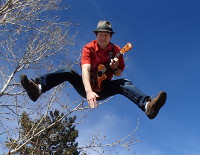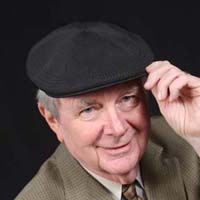| View previous topic :: View next topic |
| Author |
Message |
Zach Meissner
Contributor IV

Joined: 01 Feb 2013
Posts: 132
|
 Posted: Tue Jun 04, 2013 12:06 pm Post subject: Too Tall? How much Headroom?? Posted: Tue Jun 04, 2013 12:06 pm Post subject: Too Tall? How much Headroom?? |
 |
|
I scanned the archives and found a few good answers to my wonderings...
But I'm still on the path looking for a more clarified answer.
I gathered that most people record so that the audio peaks around -6 to -3 dBFS inside their DAW.
I keep reading that more 'headroom' is better for when applying compression in post, or any other effects - i.e. record peaks to -18 so you can raise the level cleanly later, or more room to add compression before distortion kicks in.
In your experience when/if you've worked closely with engineers and editors while on a production, do they comment about the headroom and whether or not they prefer more when mastering your track into the final production?
_________________
Pax vobiscum
ZachMeissner.com |
|
| Back to top |
|
 |
Jason Huggins
The Gates of Troy

Joined: 12 Aug 2011
Posts: 1846
Location: In the souls of a million jeans
|
 Posted: Tue Jun 04, 2013 1:25 pm Post subject: Posted: Tue Jun 04, 2013 1:25 pm Post subject: |
 |
|
| I have never had an engineer ask me for more headroom, and I always deliver files normalized to -3db (unless otherwise specified) and record with max peaks at -3db (average at -6 or a bit below). If you have to raise the levels too much, you also have to raise the noise in your room. If you have an ultra quiet studio or booth, it's not a big deal, but if you record at really low levels and have a noisy room, you'll end up with too much noise. |
|
| Back to top |
|
 |
vkuehn
DC

Joined: 24 Apr 2013
Posts: 688
Location: Vernon now calls Wisconsin home
|
 Posted: Tue Jun 04, 2013 3:30 pm Post subject: Posted: Tue Jun 04, 2013 3:30 pm Post subject: |
 |
|
A lot of the talk and discussion about a proper recording level and headroom can be driven by whether the person who "has the floor" began doing audio back in the analog days or in the digital days. The analog folks then subdivide into two groups: those who started doing audio in the days of tubes vs. those who first did audio after transistors and solid-state became the coin of the relm.
In the way lots of us record today, whether you leave 1 or 2 db of headroom or 15 to 18 db of headroom makes no difference in the program content ratio to room noise content. Yes, if you record with a LOT of headroom and then amplify it up to levels more appropriatre to finished work, the room noise will be amplified. But so will the voice, the program content.
Those of us who started doing these kinds of things back with vacuum tubes made the system work and the finished product ended up on A.M. radio stations, we had a lot of noise levels to worry about. Room noise. Tube noise. Power supply hum noise. and then when it was broadcast, there was all the noise that goes with the A.M. radio concept. That is why the old style of announcing wanted a booming, projecting announcer. And just a little fabric, grit and grain in your voice helped cut through the static and the wind noise for folks listening on a car radio in a non air-conditioned car. It was a different universe.
Back to today: If you have SYSTEM noise in your audio chain, that noise may stay constant and become a problem when you record with 15 db or more of headroom. When you normalize or other wise bring the voice, the program content up from -15 up to -3 or 01 or -0.667 which is my favorite setting in converting lectures and sermons into mp3, the systems noise can be a killer.
But there is no excuse in today's world for having that kind of SYSTEM noise. Even the modestly priced analog-to-digital converters can keep your system noise down in the -92 to -97 level. So your voice, your program content is -15 and your system noise is -96..... not even your dog is going to complain about noise that is 81 db below the content.
I think the answer to the original question is this: every studio, every ad agency, every audio book publisher with have someone in charge of their technical specs, and every one of those people will show up with their own ideas of what is good sound.... (and probably their own personal ideas of what is good politics and what is good religion.) Find out what the expectations are at the place you are dealing with TODAY. Your customer torrow will likely have a different philosophy and set of values. The age and generation of the person dictating the specs may have more to do with the expectations/requirements than does reality. |
|
| Back to top |
|
 |
vkuehn
DC

Joined: 24 Apr 2013
Posts: 688
Location: Vernon now calls Wisconsin home
|
 Posted: Tue Jun 04, 2013 3:33 pm Post subject: Posted: Tue Jun 04, 2013 3:33 pm Post subject: |
 |
|
Same song. Second verse. Everything I said/claimed in the previous post totally ignores compression and peak-limiting. Once you start doing those things, then the noise level that was way down there, totally out of hearing range, can come up and bit you in the South end while you are facing North.
That is when you are happy you have assembled a system that keeps your noise level down 60 to 80 db below content/program level. |
|
| Back to top |
|
 |
Zach Meissner
Contributor IV

Joined: 01 Feb 2013
Posts: 132
|
 Posted: Tue Jun 04, 2013 7:33 pm Post subject: Posted: Tue Jun 04, 2013 7:33 pm Post subject: |
 |
|
Thanks for the replies guys.
I figured the talk of analog vs digital would come into play 
I'm intrigued by this because I recently was trying to mix voice in with a commercial music track and found the music very overpowering, and couldn't get the VO to sit nicely in the mix.
I suppose this get's more into the 'mastering' side of things, and all the wizardry those engineers and editors do behind the scenes.
_________________
Pax vobiscum
ZachMeissner.com |
|
| Back to top |
|
 |
vkuehn
DC

Joined: 24 Apr 2013
Posts: 688
Location: Vernon now calls Wisconsin home
|
 Posted: Tue Jun 04, 2013 8:44 pm Post subject: Posted: Tue Jun 04, 2013 8:44 pm Post subject: |
 |
|
Were you doing a "hardware mix" or were you doing a software mix inside a multi-track software?
I remember from (ancient) days in radio, every announcer had their own idea of what was the proper mix between voice level and the music level. I guess that question is like mixing colors.... who is the umpire, the authority who declares: This color is good, this color is bad! At my house, I know who has the authority.... and it ain't me. (I am what Microsoft calls "color confused".)
I do Photoshop... and I keep on the shelf a book written by an egotist who proudly boasted: I can teach a color-blind person to do color photos. My wife will tell you he may be over-reaching a little bit if he wants to take credit for MY color edits. 
So who decides what is the proper blend of spoken voice and music? |
|
| Back to top |
|
 |
Zach Meissner
Contributor IV

Joined: 01 Feb 2013
Posts: 132
|
 Posted: Wed Jun 05, 2013 7:21 am Post subject: Posted: Wed Jun 05, 2013 7:21 am Post subject: |
 |
|
It's a software mix inside Audition.
I'm guessing it's simply going to take some more experimenting with the pieces of the puzzle. The headroom question stemmed from integrating a voice piece in a larger mix.
_________________
Pax vobiscum
ZachMeissner.com |
|
| Back to top |
|
 |
Bish
3.5 kHz

Joined: 22 Nov 2009
Posts: 3738
Location: Lost in the cultural wasteland of Long Island
|
 Posted: Wed Jun 05, 2013 7:59 am Post subject: Posted: Wed Jun 05, 2013 7:59 am Post subject: |
 |
|
There are lots of hangovers from the analogue days. All comments made here about the juggling act between noise floor and "headroom" are very valid. For the most part, when recoding digitally you just have to remember not to clip and keep it up and away from your noise floor... this is why a lot of people opt for -3db as a good working level... it gives workroom for stray peaks while recording. It's not analogue... you're not pushing towards distortion adding a little more "colour" with every dB... it's digital... ones and zeros... good or bad.
An analogy of sorts. When I was recording bands back in the 70s, most guitarists were using a traditional 100 watt top and a 4x12 cabinet. The distortion and colour of a Marshall stack was part of the sound. Then came the H&H amps... clinical and clean. Horrible. No character... many guitarists had to re-learn what they did with the aid of outboard effects pedals (or stick with their old stack).
If you're mindful of your signal to noise ratio and don't clip the signal, you should have perfect source material to juggle in the mix... whether it's at -3dB or -24dB should not alter the characteristics of the sound.
_________________
Bish a.k.a. Bish
Smoke me a kipper... I'll be back for breakfast.
I will not feed the trolls... I will not feed the trolls... I will not feed the trolls... I will not feed the trolls. |
|
| Back to top |
|
 |
Zach Meissner
Contributor IV

Joined: 01 Feb 2013
Posts: 132
|
 Posted: Wed Jun 05, 2013 8:24 am Post subject: Posted: Wed Jun 05, 2013 8:24 am Post subject: |
 |
|
Bish, great point about the guitars.
This leads me to two questions...
1) Since it is all 1's and 0's, if recorded at a -24 level, and raised up to a -3 level inside of a DAW, is this as clean as it would be if it was originally recorded at a higher at the preamp right into the DAW? i.e. all noise floor issues aside, does raising the level 'artificially' in post result in the same 'sound' as recording a 'hotter' level from the very beginning? (not sure how the sound is technically amplified within the software algorithm's)
2) At what levels do you record the meat of your tracks? The peaks may be at -3, but where does most of the body of the waveform lie? -18, -12 ??
_________________
Pax vobiscum
ZachMeissner.com |
|
| Back to top |
|
 |
Jason Huggins
The Gates of Troy

Joined: 12 Aug 2011
Posts: 1846
Location: In the souls of a million jeans
|
 Posted: Wed Jun 05, 2013 9:09 am Post subject: Posted: Wed Jun 05, 2013 9:09 am Post subject: |
 |
|
While the 1s and 0s thing may be "theoretically true" here is an actual recorded test. The first take is recorded with peaks at -3db, the second was recorded with peaks at -24db (then normalized to -3db in software). Let YOUR ears be the judge. Exact same everything, the only thing that changed was the initial gain on the preamp which is obviously set about 20db lower to begin with.
https://soundcloud.com/inthishope/leveltest-jasonhuggins |
|
| Back to top |
|
 |
heyguido
MMD

Joined: 31 Aug 2011
Posts: 2507
Location: RDU, the Geek Capitol of the South
|
 Posted: Wed Jun 05, 2013 9:32 am Post subject: Posted: Wed Jun 05, 2013 9:32 am Post subject: |
 |
|
Right to the point, Jason..... Well done. 
_________________
Don Brookshire
"Wait.... They wanna PAY me for this?" |
|
| Back to top |
|
 |
SkinnyJohnny
Backstage Pass

Joined: 12 Aug 2007
Posts: 462
Location: Asheville, NC
|
 Posted: Wed Jun 05, 2013 11:17 am Post subject: Posted: Wed Jun 05, 2013 11:17 am Post subject: |
 |
|
Sounds like signal to noise ration differences to me and not room noise differences. First clip...sounds like it should...Second sounds like there's not as much input level, so preamp noise level is raised. Just my opinion!
_________________
John Weeks Voice Overs
www.johnweeksvoiceovers.com |
|
| Back to top |
|
 |
heyguido
MMD

Joined: 31 Aug 2011
Posts: 2507
Location: RDU, the Geek Capitol of the South
|
 Posted: Wed Jun 05, 2013 11:22 am Post subject: Posted: Wed Jun 05, 2013 11:22 am Post subject: |
 |
|
Room noise, system noise.... it matters not.
If you boost gain, you boost the noise floor along with it.
_________________
Don Brookshire
"Wait.... They wanna PAY me for this?" |
|
| Back to top |
|
 |
SkinnyJohnny
Backstage Pass

Joined: 12 Aug 2007
Posts: 462
Location: Asheville, NC
|
 Posted: Wed Jun 05, 2013 12:36 pm Post subject: Posted: Wed Jun 05, 2013 12:36 pm Post subject: |
 |
|
Yep, but the lower you drive your preamp, the more preamp noise you'll end up with. My preamp (Gordon) has no output level control, so I drive it for the best signal to noise ratio and that usually ends up between -6 and -3, then I bring the gain up to -3. It works for me.
_________________
John Weeks Voice Overs
www.johnweeksvoiceovers.com |
|
| Back to top |
|
 |
Jason Huggins
The Gates of Troy

Joined: 12 Aug 2011
Posts: 1846
Location: In the souls of a million jeans
|
 Posted: Wed Jun 05, 2013 12:51 pm Post subject: Posted: Wed Jun 05, 2013 12:51 pm Post subject: |
 |
|
| That was the entire point of my very first response. Record as close to optimum levels as you can, and you'll get the lowest noise floor. |
|
| Back to top |
|
 |
|




